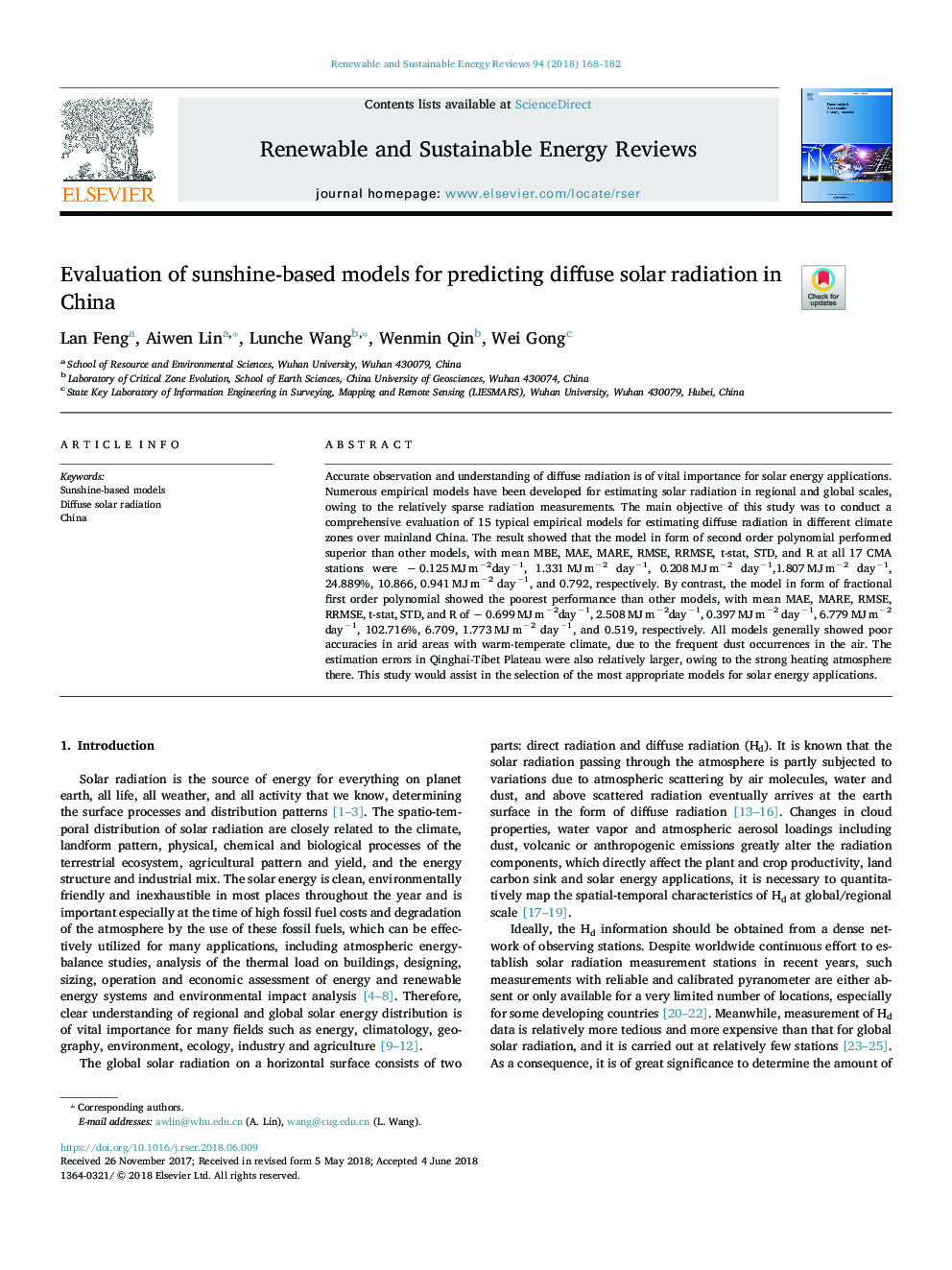| Article ID | Journal | Published Year | Pages | File Type |
|---|---|---|---|---|
| 8110381 | Renewable and Sustainable Energy Reviews | 2018 | 15 Pages |
Abstract
Accurate observation and understanding of diffuse radiation is of vital importance for solar energy applications. Numerous empirical models have been developed for estimating solar radiation in regional and global scales, owing to the relatively sparse radiation measurements. The main objective of this study was to conduct a comprehensive evaluation of 15 typical empirical models for estimating diffuse radiation in different climate zones over mainland China. The result showed that the model in form of second order polynomial performed superior than other models, with mean MBE, MAE, MARE, RMSE, RRMSE, t-stat, STD, and R at all 17 CMA stations were ââ¯0.125â¯MJâ¯mâ2dayâ1, 1.331â¯MJâ¯mâ2 dayâ1, 0.208â¯MJâ¯mâ2 dayâ1,1.807â¯MJâ¯mâ2 dayâ1, 24.889%, 10.866, 0.941â¯MJâ¯mâ2 dayâ1, and 0.792, respectively. By contrast, the model in form of fractional first order polynomial showed the poorest performance than other models, with mean MAE, MARE, RMSE, RRMSE, t-stat, STD, and R of ââ¯0.699â¯MJâ¯mâ2dayâ1, 2.508â¯MJâ¯mâ2dayâ1, 0.397â¯MJâ¯mâ2 dayâ1, 6.779â¯MJâ¯mâ2 dayâ1, 102.716%, 6.709, 1.773â¯MJâ¯mâ2 dayâ1, and 0.519, respectively. All models generally showed poor accuracies in arid areas with warm-temperate climate, due to the frequent dust occurrences in the air. The estimation errors in Qinghai-Tibet Plateau were also relatively larger, owing to the strong heating atmosphere there. This study would assist in the selection of the most appropriate models for solar energy applications.
Keywords
Related Topics
Physical Sciences and Engineering
Energy
Renewable Energy, Sustainability and the Environment
Authors
Lan Feng, Aiwen Lin, Lunche Wang, Wenmin Qin, Wei Gong,
